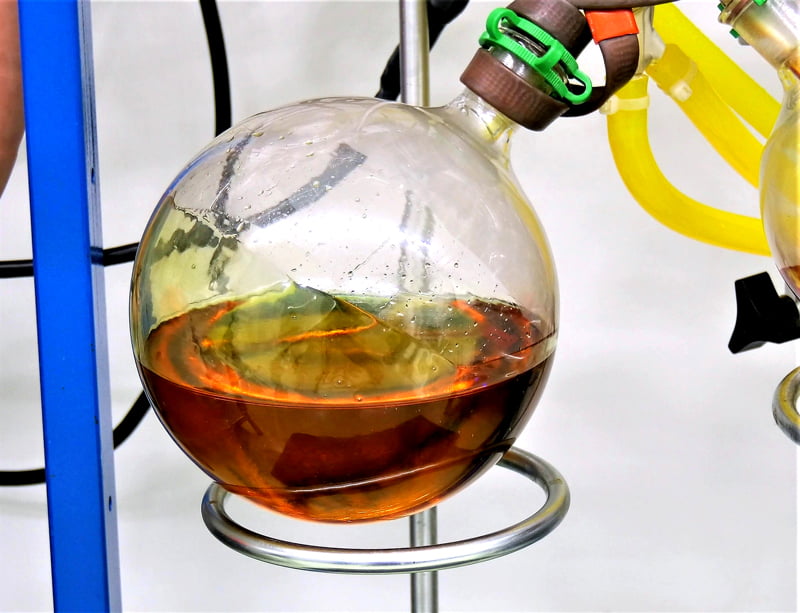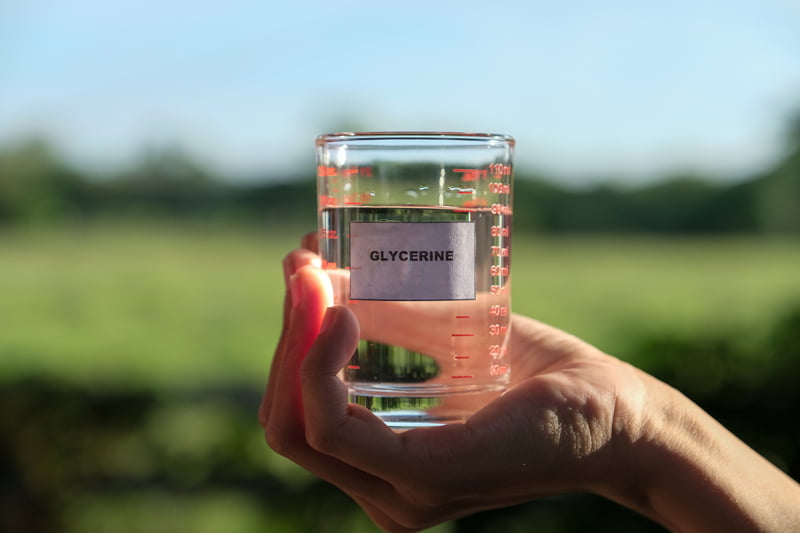Marijuana comes in various forms. If you enjoy partaking in weed, you likely know that smoking is no longer the only (or most effective) method of getting high from tetrahydrocannabinol (THC).
One of the ways to get high off THC that is gaining popularity is by making your own THC oil. THC oil is the product of extracting the substance from the Cannabis plant. This oil is a THC concentrate and therefore, it is much more potent than smoking dried flowers.
There are a few different methods that are successful in creating THC oil and through this guide, you will learn what those methods are, the various uses of THC oil, and how the process of using decarboxylation affects the results.
What are Cannabis Oils
Cannabis oils such as THC or CBD are concentrates extracted from the actual cannabis flower. After being removed, it undergoes processing resulting in a concentrated form.
Concentrated cannabis is much more potent than smoking or even adding the plant to edibles. There are various types of cannabis oil, and each one is just as unique as the next one.
Most cannabis oils that are from online dispensaries experience a process called “chemical extraction.” Chemical extraction is a method in which a chemical solvent extracts the cannabinoids and other beneficial compounds like terpenes and flavonoids from cannabis. From there, the compounds attach to carriers like hemp oil or MCT oil.
The levels of THC in marijuana oil will vary depending on the plant parent. This variation is hard to predict unless you have extracted from that plant before. The THC levels in marijuana will be higher than that of hemp. The average marijuana oil contains anywhere from 40%- 80% THC. When marijuana is in this form, it can be four times as strong as compared to even the strongest strains of marijuana which typically only reach concentrations of upwards of 20% THC.
Use of Cannabis Oil
Many users either smoke or vape THC oil. Smoking and vaping are the most common methods because most of the time, the effects are either instant or noticeably faster than the other methods. Smoking involves burning the dried plant, whereas vaping involves vaporizing the cannabinoids which are found in the THC oils then inhaling the vapor.
Both the smoking method and the vaping method offer the fastest absorption rate. Unfortunately, it is not long-lasting as the side effects disappear at a more rapid pace than with other methods. Smoking used to be the go-to method for consuming marijuana, but like everything, as times change so do the techniques. Vaping THC oil started becoming popular in recent years and as of today, it is still on the rise. According to the National Institute for Drug Abuse for teens, teens are the most common to vape.
THC oil is a concentrate, which means that it is almost four times as strong as plain marijuana. The main difference is that THC oil has a 90% concentration compared to the THC plant which offers around a 23% concentration. Because of this, it could affect how consumers build their tolerance. Tolerance can be dangerous because the more tolerant you become, the more you have to consume to get the same high. Since the oil has a higher concentration, this can pose risks in terms of psychological addiction. Remember – start low and go slow!
Benefits of Using THC Oil
When a person uses a THC oil pen, which is another term for a vaporizer, they can benefit from it in a variety of ways. For example, both cannabis and THC have been proven to have a range of health benefits. Some of these benefits include the potential to have the ability to relieve symptoms such as nausea and vomiting in cancer patients that are receiving chemotherapy treatments.
Research also shows that THC oil can help patients with neurodegenerative diseases and can help people that have Parkinson’s and Alzheimer’s diseases. It is also known for relieving chronic pain.
Decarboxylating Makes the Oil Orally Active
The process of decarboxylation is when THCA converts into a psychoactive THC. A psychoactive drug is one that alters the brain chemistry causing you to feel the sensation of the high. Initially, cannabis is not psychoactive but when you use the process of decarboxylation the plant converts into a psychoactive drug then when mixed with heat, the effects achieve their optimal potency.
When you are doing anything with consumable products, you run into the risk of causing botulism in your edibles and oils. Botulism is a rare poisoning caused by the toxins produced by Clostridium botulinum bacteria induced by improper food handling. Botulism can be fatal and will require emergency medical care.
The process of decarboxylation has the added benefit of lowering the risk of botulism in oils and edibles. If you don’t decarboxylate your cannabis correctly, the moisture from the cannabis will act as a breeding ground for botulism which means that it will grow in your tinctures, butter, or oils. This is a very important step in the oil-making process!
Cold Vegetable Glycerin Extraction
One method to extract THC oil is called the “cold vegetable glycerin extraction” which will take longer than its counterparts. Still, it is a great deal safer and more accessible. So, in a sense, you need to weigh the pros and cons because safety should always be the critical component in any task you undertake.
What is Vegetable Glycerin?
Vegetable glycerin is a clear and odorless liquid that is used in many industries. If you look at it from a chemistry perspective, glycerin makes up the backbone of the fats that are called triglycerides. Vegetable glycerin is made by taking the triglycerides from plant sources and then starting to break them down. Some familiar sources for triglycerides are coconut oil, palm oil, and soy oil.
An extraction using vegetable glycerin tends to be slightly sweeter but the downsides are that it cannot hold as many phytocannabinoids and has a shorter shelf life than alcohol.
There are two methods of extracting THC when you use vegetable glycerin, and the only variations are the time of preparation and temperature.
Cold Glycerin Extraction
One method that takes the longest is “cold glycerin extraction.” This process can take anywhere from 60 to 120 days. Despite taking an extended period of time, it provides the best results. When you use the heat method, the quality of the product goes down because the heat vaporizes the terpenoids and aromatics.
The cold glycerin extraction is by far the easiest and most palatable way to make glycerin tincture. To extract using the cold method, all you have to do is simply soak the plant material in glycerin at ambient temperatures and agitate it for sixty or more days. The only way to make the cold process glycerin tincture is by loading a canning jar two-thirds full of plant material, make sure that it is lightly compacted, and then cover it with glycerin by stirring the mixture with a wooden spoon. Ensure that you coat the whole surface, and the mixture is homogeneous.
Then add another inch of glycerin on top. Place the jars in a cool dark place, or you can also cover them to make sure that light won’t get in. The best method is wrapping the jars in aluminum foil to make sure light won’t pass through. Every day make sure to periodically agitate the jars using one of the methods mentioned above. Towards the end, filter out the plant material for a light golden to dark amber glycerin tincture, that is when it is the best and tastiest quality.
Hot Glycerin Extraction
The shorter method of extracting through vegetable glycerin involves almost the same steps as the one listed above. However, this process consists of heating the cannabis/VG mixture to speed up the process drastically. Please remember that when you apply heat, you lose out on the quality of the result.
This shorter method involves mixing the raw cannabis flower into the VG, just like in the first method. However, instead of letting it sit for weeks at a time, you will cook the liquid mixture in an oil bath to speed up the diffusion process drastically. This process turns a normal 2-month process into a 3 to 4-hour process, so it is very beneficial when you find yourself short on time.
This method starts by breaking the raw cannabis buds by hand and then dumping them into a heat-safe glass jar. Pour the VG into the jar to saturate the buds, then stir with a wooden spoon to evenly coat everything. Then you will put them into an oil bath until the mixture is at 82°C To do the oil bath, you start by adding either vegetable or canola oil into a large pan, 1 to 2 inches should be perfect, then let it sit for 45 minutes.
Afterward, let the mixture cool down. Then, start to filter out the cannabis and VG mixture using a strainer. Filtering your mix will be considered your first run which is the most potent. You then will need to use a rubber spatula to press out the liquid from the clumped-up buds through the strainer and into a clean jar. Then repeat this process doing three runs in total then boil the refined THC liquid in your oil bath at 104°C for around 30 minutes to decarboxylate the THCA into THC fully, and then it is done!
For maximum effects and taste, allow it to sit for 15 to 20 minutes after adding the THC e-juice to the vape cartridge before you start vaping. Giving it some time to cure will enable the wick to absorb the e-liquid fully.
Mixing Rosin with Vape Solution
Another method of extracting is through rosin mixed with a vape solution. Out of all the processes, this one is the best and most preferred one for making THC oil for vape pens because it is considered the highest quality, the most potent, and the most flavorful. It is also the safest and quickest method.
You can speed up the process even more by using already made THC concentrates such as Hash, shatter, or BHO wax if you don’t have the tools to press your rosin.
With this method, you must press your raw cannabis buds in your rosin press or hair straightener. I know it sounds weird, but hair straighteners are perfect for this method! Both of these will create the rosin wax which you then add to your vape solution and then you slightly heat them to mix the two together.
When using a hair straightener, the best temp is between 120-140°C. Getting the right temperature can be hard to judge when it comes to some hair straighteners, so to set the heat on them accordingly, you can use a thermometer for backup just in case to make sure that it reaches the correct temperature range.
For you to do this, place the weed in some parchment paper, fold it, and squeeze with the hair straightener for about 5 seconds. Then, set it aside to cool down and repeat until you have about 0.5 grams of rosin. Now, extract the THC from the paper by putting it in the freezer for a minute and then scrapping the rosin off. The freezing helps release it from the paper.
Then, mix it with medical terpenes or other vape solutions in a glass vial and heat it until you get the desired golden e-liquid.
All of these methods for creating a THC oil vape juice are relatively simple and safe. It allows you to create your own juice to either fill disposable carts or even use it in a reusable vape tank, gives you a simple way to discreetly consume THC throughout the day. Alternatively, if you decide that the idea of making your own THC oil isn’t right for you at this time, check out Online Dispensary Canada for all types of THC & other cannabis-related products.


